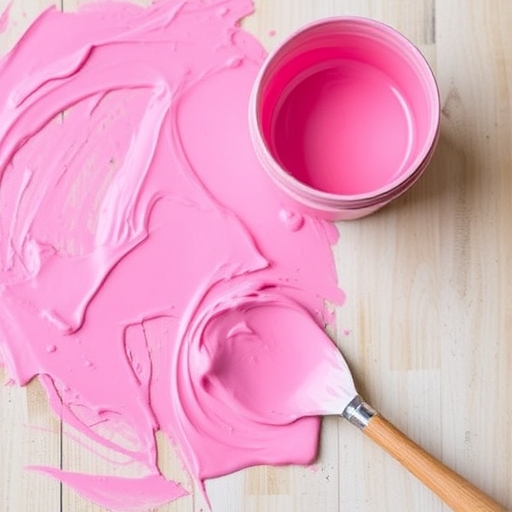How to Make Pink Paint
Creating your own pink paint can be a fun and rewarding project, whether you’re an artist, decorator, or simply someone who enjoys DIY crafts. Pink is a versatile color that can range from soft pastels to vibrant fuchsias, and knowing how to create different shades can enhance your artistic expression. In this article, we’ll explore the materials needed, the process of making pink paint, and tips for achieving various shades.
Understanding Color Theory
Before diving into the process of making pink paint, it’s essential to understand some basic principles of color theory.
Primary, Secondary, and Tertiary Colors
-
- Primary Colors: Red, blue, and yellow. These colors cannot be created by mixing other colors.
- Secondary Colors: Green, orange, and purple. These are made by mixing equal parts of two primary colors.
- Tertiary Colors: These are created by mixing a primary color with a secondary color.
The Role of Red and White in Making Pink
Pink is primarily derived from red, which is a primary color. By adding white to red, you can create various shades of pink. The more white you add, the lighter the pink will become.
Materials Needed
To make pink paint, you will need the following materials:
Basic Ingredients
-
- Red Paint: Acrylic, watercolor, or oil paint.
- White Paint: Acrylic, watercolor, or oil paint.
Tools
-
- Mixing Palette: A flat surface for mixing colors.
- Palette Knife or Brush: For stirring and blending.
- Containers: Small jars or cups to hold your paint.
Optional Ingredients
-
- Color Additives: Such as blue or yellow for creating variations in pink.
- Water: If using watercolor paint for dilution.
- Mediums: Such as linseed oil for oil paints to adjust texture.
Step-by-Step Guide to Making Pink Paint
Creating Basic Pink Paint
1. Gather Your Materials: Ensure you have your red and white paint ready, along with your mixing tools.
2. Start with Red: Squeeze a small amount of red paint onto your mixing palette. The amount you use will depend on how much pink paint you want to create.
3. Add White Gradually: Begin adding white paint to the red. Start with a small amount (about 1 part white to 3 parts red) and mix thoroughly.
4. Mix Until Smooth: Use your palette knife or brush to blend the colors together until you achieve a uniform consistency.
5. Test the Color: Apply a small amount of the mixed paint on paper or canvas to see the shade. Adjust by adding more white if you want a lighter pink or more red if you prefer a deeper shade.
Achieving Different Shades of Pink
To create various shades of pink, you can experiment with additional colors:
| Shade of Pink | Color Mix | Tips |
|---|---|---|
| Light Pink | 1 part red, 4 parts white | Add more white for a pastel effect. |
| Hot Pink | 3 parts red, 1 part white | Use a vibrant red for a brighter pink. |
| Coral Pink | 2 parts red, 1 part yellow, 2 parts white | Mix in yellow for a warm, coral tone. |
| Mauve | 2 parts red, 1 part blue, 2 parts white | Add a touch of blue for a muted pink. |
| Fuchsia | 4 parts red, 1 part blue | Use a deep red and a small amount of blue for vibrancy. |
Tips for Mixing Paint
-
- Start Small: When experimenting with new colors, start with small amounts of paint to avoid waste.
- Keep a Record: Note down your color ratios so you can replicate your favorite shades later.
- Use Quality Paints: Higher quality paints tend to mix better and produce more vibrant colors.
- Experiment: Don’t be afraid to try different combinations. Color mixing is an art in itself!
Common Uses for Pink Paint
Pink paint can be used in various applications, including:
- Art Projects: Ideal for painting landscapes, portraits, or abstract art.
- Home Decor: Great for accent walls, furniture, or children’s rooms.
- Craft Projects: Perfect for DIY crafts, scrapbooking, or card making.
- Themed Events: Suitable for parties, weddings, or special occasions where a pink theme is desired.
FAQ
Can I make pink paint without red?
Yes! You can create pink using other colors, such as mixing a light shade of purple with white or using a base of coral.
What type of paint is best for making pink?
Acrylic paint is often the easiest to work with for mixing colors due to its quick drying time and versatility. However, watercolor or oil paints can also be used depending on the desired effect and application.
How do I store homemade paint?
Store your homemade paint in airtight containers in a cool, dry place. For acrylic paints, you can also add a few drops of water to prevent them from drying out.
How do I adjust the consistency of my paint?
If your paint is too thick, you can thin it by adding a small amount of water (for water-based paints) or a medium (for oil-based paints). Mix thoroughly until you achieve the desired consistency.
Conclusion
Making pink paint is a straightforward process that allows for creativity and experimentation. By understanding color theory and the mixing process, you can create a wide range of pink shades tailored to your projects. Whether you’re painting a canvas, decorating a space, or crafting, the ability to mix your own colors can enhance your artistic endeavors and bring your vision to life. So gather your materials, unleash your creativity, and enjoy the art of making pink paint!

